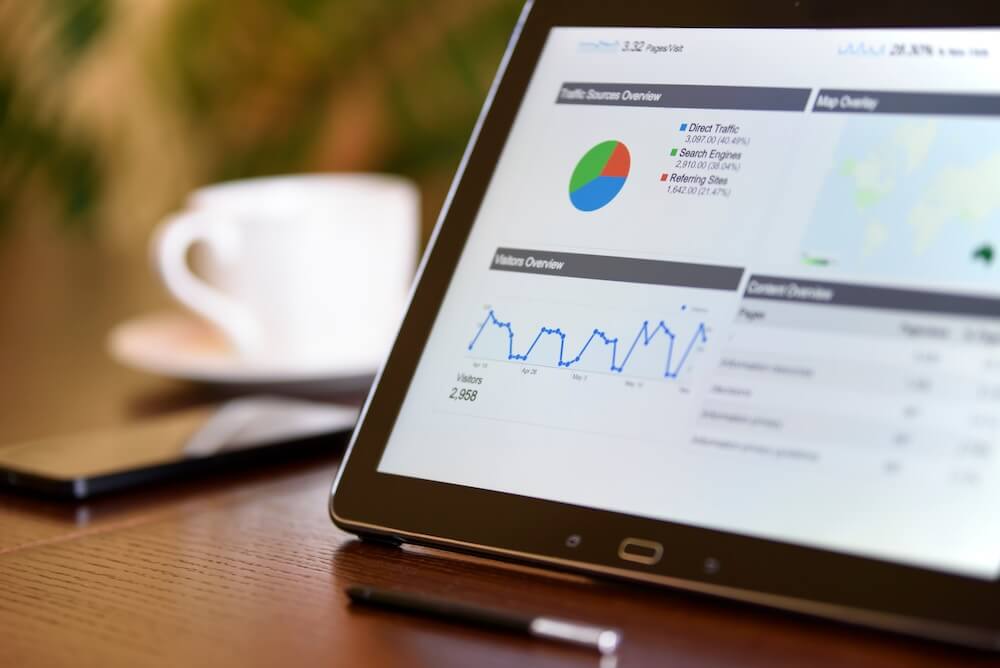If you're looking to boost sales, increase sign-ups, or get more out of your marketing efforts, you’ll no doubt be looking at marketing conversion metrics. But what exactly are marketing conversion metrics, and what are the best conversion metrics marketers should be tracking?
In this post, we dive deep into the world of marketing conversion metrics, breaking down what they are, why they're crucial for your marketing strategy,and what are the most important marketing metrics for conversion. Plus, we'll walk you through the nitty-gritty of calculating these metrics yourself, so you can start making data-driven decisions that drive results.
What are marketing conversion metrics?
Marketing conversion metrics are essential indicators for evaluating the effectiveness of your marketing strategies. Simply put, these are the stats that reveal how well your ads and promotions are performing in terms of prompting people to take action, such as making a purchase or signing up for a newsletter.
They measure the success of your efforts in converting potential customers into actual customers or encouraging them to take other desired actions. Understanding and utilizing conversion metrics is crucial for businesses to assess the success of their marketing campaigns and make necessary adjustments to optimize their performance.
Understanding conversion marketing metrics
In marketing, a conversion refers to any specific action that marketers aim for potential customers to take after encountering their campaigns. This action varies depending on the business's objectives but effectively can be anything that adds value to the company.
For example;
- Purchases
The most straightforward and desired conversion, especially for e-commerce sites.- Newsletter Sign-ups
Helps build a mailing list for ongoing engagement through email marketing.- Account Registrations
Encourages users to engage more deeply with a service or platform, potentially increasing loyalty and long-term interaction.- Downloading Resources
Such as whitepapers or eBooks, particularly common in B2B marketing to gather leads and establish expertise.- Requesting a Demo or Consultation
Vital for services or products that require demonstration to highlight benefits, like in software sales.- Filling Out a Contact Form
Generates leads and is particularly useful in service industries where direct contact precedes transactions.
What conversion marketing metrics should you be tracking?
So, that’s what conversion metrics are, but what marketing conversion metrics should you be tracking? Below we give you our list of the top conversion metrics for marketers.
Total Conversions
Quite simply, the total number of people that converted - whatever conversion event you or your business define as a key objective. To calculate it, simply add up the total amount of conversion in a given time period.
Conversion rate
Again, pretty simple, the conversion rate is the total percentage of users reached by a particular marketing campaign or activity that went on to convert (whatever that conversion is). While the total conversion gives you a total value, the rate gives you a percentage value meaning you can measure how well your campaigns are performing in regards to get you you the those all important conversions.
Post-click conversion rate
Post-click conversion rate measures the percentage of users who, after clicking on an ad or any other link or CTA, go on to convert (be it a sale, newsletter sign-up, meeting booking, etc.). This rate is important because it provides insight into how well an ad or campaign is performing in converting clicks into tangible results. If you like, it’s the conversion metric equivalent of your standard click-through rate (CTR) but focusing on which of the clicks actually ended up supporting your business goals.
To calculate the post-click conversion rate, you divide the number of conversions (actions taken after the click) by the total number of clicks the ad received, then multiply the result by 100 to express it as a percentage.
Here’s the formula:
Post-click Conversion Rate =
(Number of Conversions/Number of Clicks) × 100%
This metric is crucial for marketers to understand how effective their ads and landing pages are in compelling users to complete an action, helping them optimize their ad spend and improve campaign performance.
Post-click impulse conversions
Post-click impulse conversions refer to a specific kind of consumer behavior in online marketing where a user makes an immediate purchase or commits to an action right after clicking on an ad, largely based on impulse rather than a premeditated decision. This term captures a scenario where the effectiveness of an ad is so high that it drives an instant conversion, which can often be attributed to compelling content, a strong call-to-action, or an appealing offer that triggers an impulsive reaction.
To calculate, first, clearly define what constitutes an impulse purchase. Usually, this is defined as users who made a purchase within a specific time period of clicking on an ad, say, within 10 minutes. Then simply divide the total clicks by the total number of impulse conversions.
Here’s the formula:
Post-Click Impulse Conversion Rate =
( Total Clicks/Number of Immediate Conversions)×100
Post-click impulse conversions are particularly valuable to marketers as they indicate a direct correlation between the advertisement and the consumer's action. Understanding what drives these impulse decisions can help in designing more effective marketing strategies to increase immediate responses from future advertisements.
Post-click Latent conversions
Post-click latent conversions refer to those conversions that occur after a delay following a user's click on an advertisement. Unlike impulse conversions, which happen almost immediately, latent conversions involve a decision-making process where the user takes more time to think over the purchase or action.
To calculate, you first need to determine the appropriate lookback window to attribute conversions to the original ad click. This can range from a few days to 30 days or more, depending on the typical buying cycle of your product or service. Then divide the total number of clicks within that period, by the number of conversions from those clicks.
Here’s the formula:
Post-Click Latent Conversion Rate =
(Total Clicks within the Lookback Period/Number of Latent Conversions) × 100
Understanding post-click latent conversions is crucial for marketers because it provides deeper insights into the customer journey, revealing that the decision-making process may be longer and more complex than initially apparent. It also helps assess the long-term effectiveness of advertising campaigns beyond immediate conversions resulting in more accurate return on Investment (ROI) calculations.
Post-impression conversion rate
Post-Impression Conversion Rate measures the effectiveness of digital advertisements based on the number of conversions that occur after users see an ad even if they do not click on it. This metric gives insights into the more passive influences of advertisements, capturing how mere exposure to an ad can eventually lead to a conversion.
To calculate, you need to establish a "view-through window," which is the period during which a conversion is still considered attributable to a view of the ad. This window varies depending on the product and typical consumer decision time but is commonly set between 1 and 30 days. You then need data on impressions and the conversions that follow within your defined tracking period.
Here’s the formula:
Post-Impression Conversion Rate =
(Number of Conversions Attributed to Views/Total Impressions) × 100
Measuring the post-impression conversion rate is key to understanding brand recall among consumers and the impact of brand awareness in general. It also provides a broader perspective on ad performance beyond click-through rates, capturing the full impact of display advertising. In turn, marketers can more accurately calculate the return on investment (ROI) of their display campaigns.
It’s worth noting that, with the death of third-party cookies, measuring post-impression conversion rate is going to be increasingly challenging. However, it is not impossible for marketers to continue measuring post-impression conversions through the use of first-party data as well as data from clean room environments.
Making the most out of marketing conversion metrics
Conversion metrics are undeniably crucial for understanding and optimizing your marketing efforts. They give you a clear picture of how well your campaigns are turning prospects into customers, which is essential for driving growth and maximizing ROI. However, relying solely on conversion metrics can provide a limited view of your overall marketing performance.
To truly make the most out of your marketing conversion metrics, it's important to combine them with other data points from various sources. This means integrating data from web analytics, social media insights, email marketing stats, and even offline data. By doing so, you can get a holistic view of your customers' journey and understand the full impact of your marketing strategies.
Remember, while conversion metrics tell you what’s happening at the end of the funnel, other metrics can provide context on how users are interacting with your brand before they convert. Metrics like click-through rates, engagement rates, and customer satisfaction scores can offer valuable insights into the effectiveness of your marketing tactics and where adjustments may be needed.











